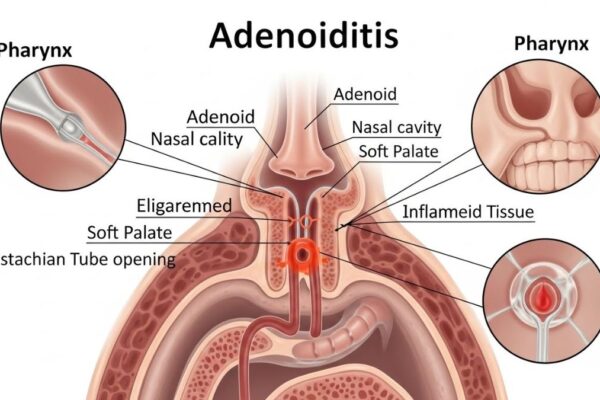The $2 Million Mistake We Made Trusting Our Prospective Risk Adjustment Alerts

Our EMR started pinging alerts for prospective risk adjustment coding in January. By March, providers had disabled them. By June, we’d missed $2 million in legitimate HCCs. The technology worked perfectly. Our implementation strategy was garbage.
The vendor promised their alerts would revolutionize documentation at the point of care. Providers would see missing HCCs during visits and document them instantly. Revenue would flow. Everyone wins. What actually happened? Alert fatigue so severe that doctors started charting on paper to avoid the system.
The Alert Avalanche Disaster
First day with the new alerts: Dr. Williams saw 22 patients. The system fired 73 risk adjustment notifications. That’s more than three interruptions per visit. She tried reviewing each one carefully. Spent six minutes per patient just managing alerts. Ran two hours behind. Patients complained. Staff panicked.
By day three, she’d figured out how to click through without reading. By week two, she’d found the disable button.
The alerts were technically correct. Mr. Thompson did have diabetes that needed documentation. Mrs. Chen’s heart failure required specificity. But bombarding providers during patient care is like texting someone while they’re performing surgery. Accurate information delivered at the wrong moment becomes dangerous noise.
Here’s what killed me: we knew this would happen. Every article about EMR alerts warns about fatigue. But the vendor convinced us their alerts were “smart” and “context-aware.” They were smart about risk adjustment. They were idiots about clinical workflow.
The Ghost Documentation Problem
The scariest part wasn’t disabled alerts. It was ghost documentation: diagnoses added without clinical assessment just to clear notifications.
I audited 100 encounters from February. Found 47 instances where providers added diagnoses the alerts suggested without examining or discussing those conditions. The system said “possible CKD based on labs,” provider clicked accept, CKD got documented. No kidney discussion. No treatment plan. Just ghost codes floating in charts.
One patient supposedly had major depression documented at a visit for a sprained ankle. The provider later told me, “The alert popped up based on old medications. I clicked yes to make it go away. I didn’t even ask about mood.”
We were creating fraud. Not intentionally, but systematically. Providers weren’t lying; they were drowning. When you’re 45 minutes behind and an alert blocks your screen, you’ll click anything to move forward.
The Pre-Visit Breakthrough
We turned off all point-of-care alerts. Every single one. Providers actually applauded. Then we moved prospective risk adjustment where it belongs: before visits, not during them.
Now, every morning, providers get ONE email. Not 73 alerts. One simple list: “Today’s chronic conditions needing reassessment.” Takes 90 seconds to review over coffee. No popups. No interruptions. No blocked screens during patient care.
Dr. Williams keeps the list on her phone. Between patients, she glances at it. “Oh right, need to check Mrs. Garcia’s kidney function.” She documents naturally during visits because she’s prepared, not ambushed.
The ghost documentation disappeared. Providers document conditions they actually assess because they’ve had time to think about them. Quality went up. Stress went down. Revenue increased 40% without a single point-of-care interruption.
The Huddle Revolution
Traditional prospective coding tries to fix documentation while it’s happening. That’s like editing while writing, guaranteed to fail. We fix it before it starts.
Every morning huddle now includes 60 seconds of risk adjustment prep. Not education. Not training. Just facts: “Mr. Johnson at 10 AM has historical CHF and diabetes. Both need documentation.” The medical assistant reminds providers before each relevant visit. Simple. Effective. Zero technology required.
The coding team pre-reviews scheduled patients, not yesterday’s notes. They identify documentation opportunities before visits, not after. When they find gaps, they inform providers who can actually address them, not create addendums about ancient history.
We measure differently now too. Not alert response rates or click-through percentages. We measure one thing: conditions documented during visits without prompting. That number climbs monthly because we’re supporting providers, not harassing them.
Your Tuesday Test
Want to know if your prospective risk adjustment is actually prospective? Count tomorrow’s scheduled visits with chronic conditions. Now ask providers which specific conditions need documentation for which patients. If they don’t know, you’re not doing prospective anything.
Check your alert override rate. If it’s above 50%, providers aren’t using them; they’re swatting them away like flies. You’re training doctors to ignore important information by overwhelming them with too much.
Track ghost documentation by comparing documented diagnoses with actual visit discussions. If depression gets coded during orthopedic visits or kidney disease appears without lab review, you’ve created a compliance nightmare disguised as prospective success.
Real prospective risk adjustment happens in the calm before visits, not the chaos during them. Prepare providers with tomorrow’s needs, not real-time interruptions. Give them time to think, plan, and document thoughtfully.
That $2 million we lost? We’ve recovered it twice over since killing the alerts. Turns out the best time to capture risk adjustment isn’t when providers are listening to heart beats. It’s when they’re drinking coffee, planning their day, and can actually think about what needs documentation.



Leave a Reply